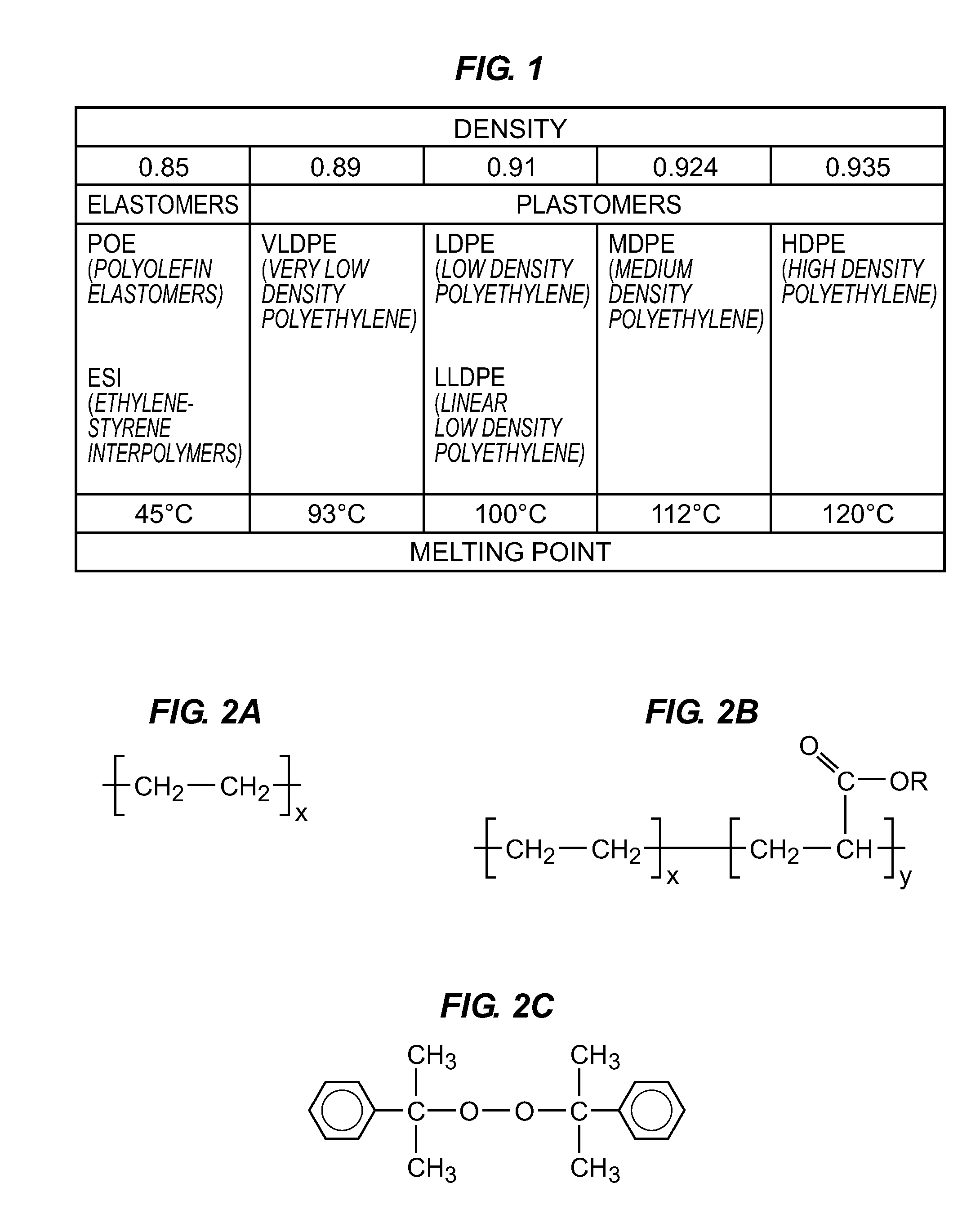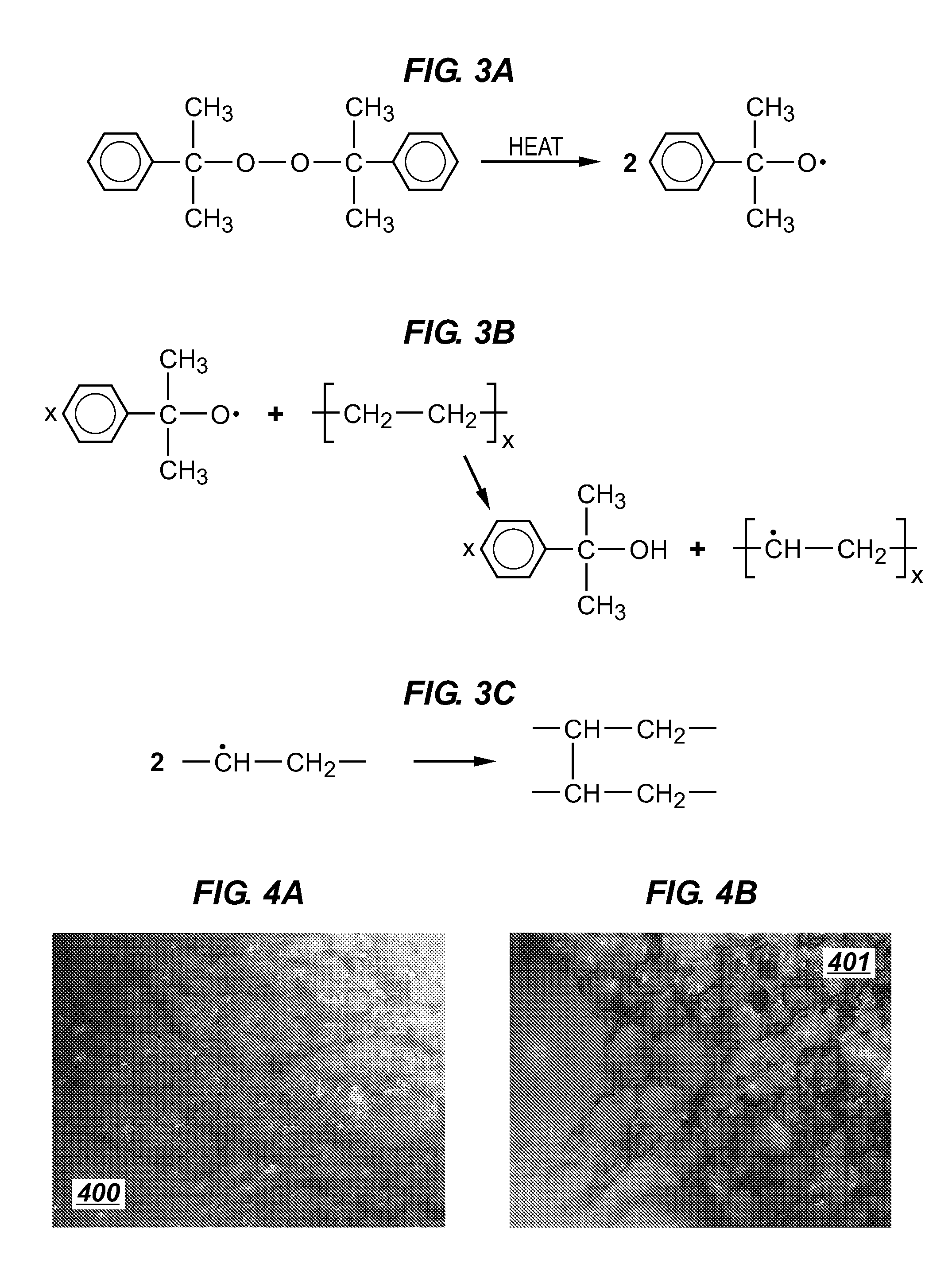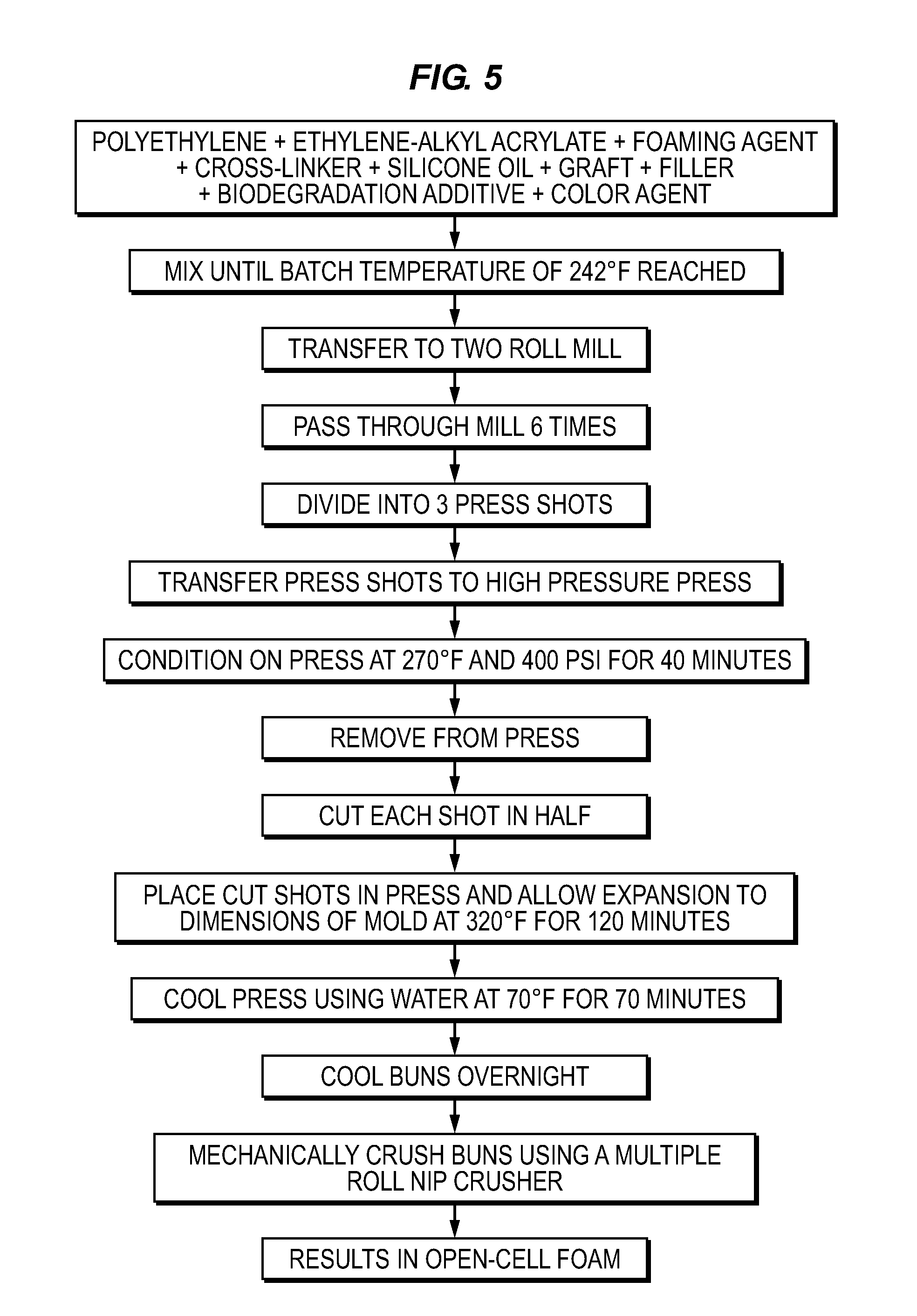Foam compositions for selective recovery of oil spills and other applications
a technology of oil spills and compositions, applied in water/sludge/sewage treatment, other chemical processes, chemistry apparatuses and processes, etc., can solve the problems of affecting food sources obtained from those waters, destroying aquatic and terrestrial life, and challenging and costly procedures for cleaning up oil spills
- Summary
- Abstract
- Description
- Claims
- Application Information
AI Technical Summary
Benefits of technology
Problems solved by technology
Method used
Image
Examples
example 1
[0065]The following formulation and process conditions were used:
[0066]
TABLE 1phrComponent(parts per hundred rubber)(PE) Resin 144Ethylene-Methyl Acrylate Resin 156Azodicarbonamide18Dicumyl Peroxide −40%1.55active on Kaolin claySilicone Oil0.9Zinc Stearate0.3Zinc Oxide0.1Calcium Carbonate20SR2003 Biodegradation additive1Green Color Concentrate3.5
[0067]The ingredients were mixed in the dispersion mixer at a total weight of 155.5 pounds. FIG. 5 illustrates one embodiment of a method of manufacture of the open-cell foam. In other embodiments, the method may be varied. The mixing was continued until a batch temperature of 242° F. was reached, and the mixture was transferred to a two roll mill with roll temperatures of 280° F. and 275° F. The material was passed through the mill 6 times to remove air and finish the mixing process. The batch was evenly divided into 3 press shots and preformed in a low pressure press.
[0068]The press shots were transferred to the high pressure press. The te...
example 2
[0069]The following formulation and process conditions were used:
[0070]
TABLE 2phrComponent(parts per hundred rubber)(PE) Resin 244Ethylene-Methyl Acrylate Resin 256Azodicarbonamide18Dicumyl Peroxide −40%1.55active on Kaolin claySilicone Oil0.9Zinc Stearate0.3Zinc Oxide0.1Calcium Carbonate20SR2003 Biodegradation additive1Green Color Concentrate3.5
Using the same processing temperatures as in Example 1 and lowering the shot size into the high pressure press from 52 to 48 pounds, the resultant foam had an average cell size of 1.4 mm and a density of 1.6 pounds per cubic foot (pcf). One gram per cubic centimeter equals 62.4269 pounds per cubic foot. The resulting physical properties of the foam are included in Table 3 and Table 4.
example 3
[0071]Physical properties of formulations in Example 1 and Example 2
[0072]
TABLE 3PropertyUnitsExample 1Example 2Densitypounds per cubic foot1.71.6Tensile Strengthpounds per square inch2217Elongation at break%21718325% compressionpounds per square inch0.31.1deflection50% compressionpounds per square inch0.73.6deflectionCompression Set%Tear Strengthpounds per lineal inch66Average Cell sizemm - by ocular0.651.4
[0073]
TABLE 4MeltResin IDTypeindexDensity% acrylatePE1polyethylene2.30.9180PE2polyethylene2.20.9190alkyl acrylate resin 1ethylene methyl2.00.94120acrylate copolymeralkyl acrylate resin 2ethylene methyl2.10.94424acrylate copolymer
PUM
| Property | Measurement | Unit |
|---|---|---|
| density | aaaaa | aaaaa |
| average cell size | aaaaa | aaaaa |
| average cell size | aaaaa | aaaaa |
Abstract
Description
Claims
Application Information
 Login to View More
Login to View More - R&D
- Intellectual Property
- Life Sciences
- Materials
- Tech Scout
- Unparalleled Data Quality
- Higher Quality Content
- 60% Fewer Hallucinations
Browse by: Latest US Patents, China's latest patents, Technical Efficacy Thesaurus, Application Domain, Technology Topic, Popular Technical Reports.
© 2025 PatSnap. All rights reserved.Legal|Privacy policy|Modern Slavery Act Transparency Statement|Sitemap|About US| Contact US: help@patsnap.com



